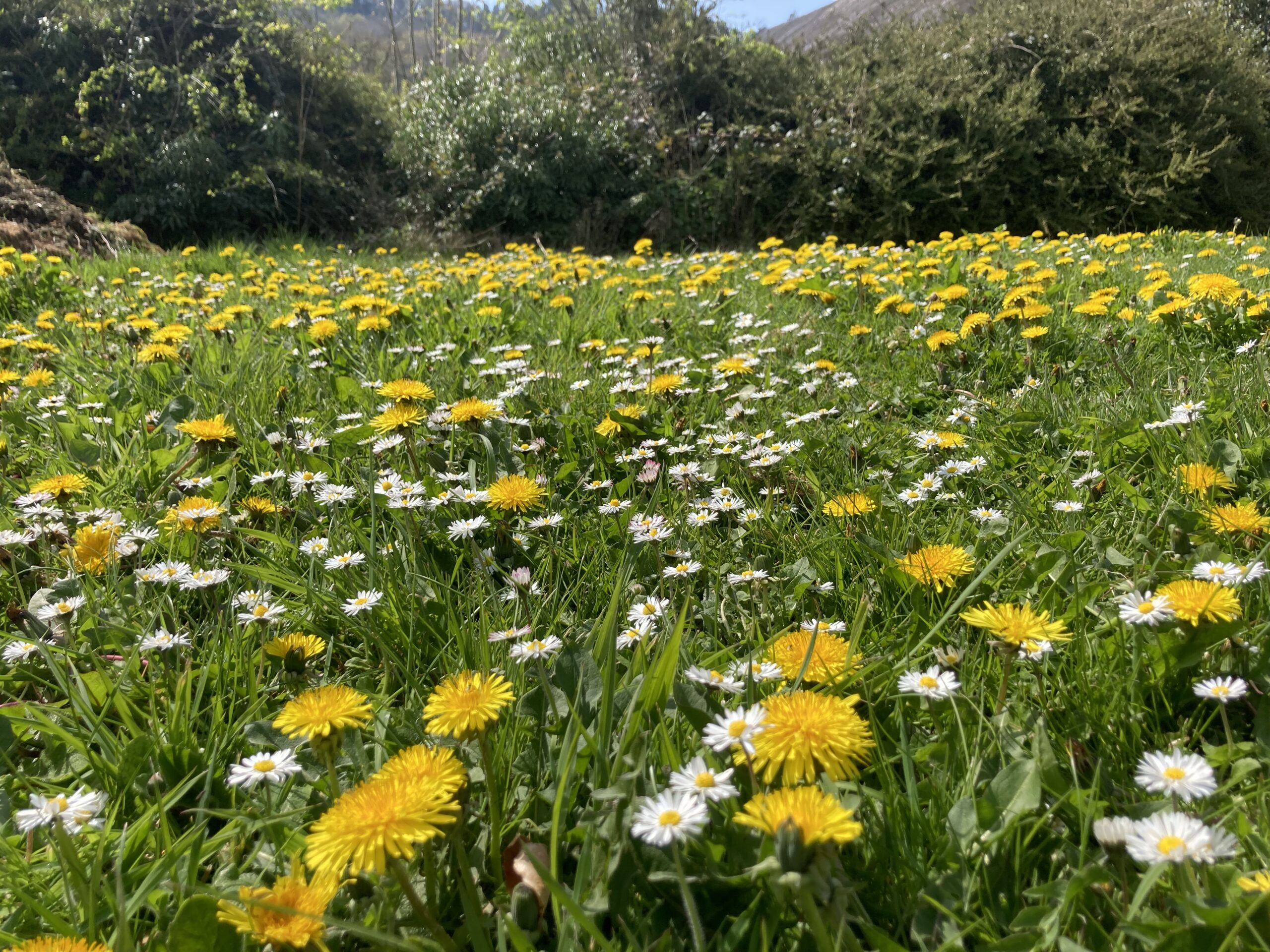
Going Wild in May
For a number of years following the discovery that both common and bee-orchids will grow there, we have allowed the small, south triangular lawn adjoining the driveway side of the forecourt to grow wild during wildflower flowering season. As well as the usual suspects, such as dandelion, buttercup, daisy and plantain, we have also been rewarded with many cowslips and the orchids have grown in number. We attempted something similar with the north bed, but that has not yet been overly successful. The much larger new area in the southeast of the grounds is, as yet, a work-in-progress (see ‘A SeedyArea’ in What’s Going On?). Re-wilding, which we have thus attempted in our own small way, has since become a countryside watchword.
Right: Bee orchid
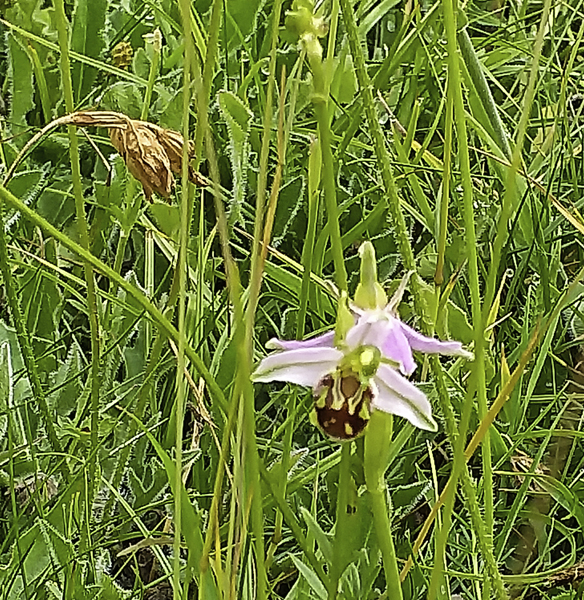
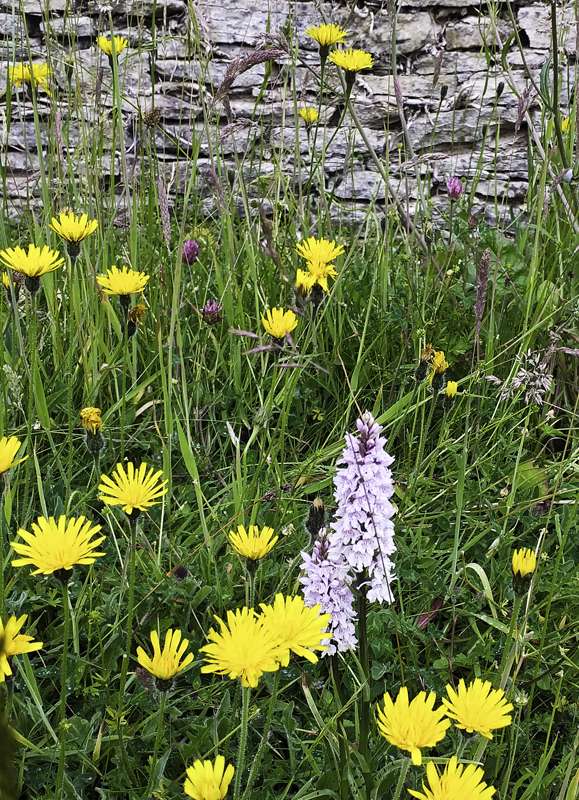
A national organization is now encouraging householders with lawns to allow wildflowers to grow and flower freely during the month of May by not mowing. Founded in 1989 by botanist, author and television presenter, the late David Bellamy OBE, Plantlife International is a British conservation charity working nationally and internationally to save threatened wild flowers, plants and fungi. They now own nearly 4,500 acres of nature reserve across England, Scotland and Wales and have 11,000 members and supporters. HRH The Prince of Wales is their Patron. No Mow May has become their trademark and the program has grown by leaps and bounds over the last few years. Last year, it had 2,157 participants, growing by a third over the previous year. Linked as it is to a plant survey and study, participants in 2021 reported over 250 different species of wildflowers, including some rarities, growing on peoples’ lawns. There were record numbers of bee-orchids and snake’s-head fritillaries, both of which have been seen at Brockhampton.
Left: Common orchids in the south triangular lawn at Brockhampton Park.
Below: Oxeye daisy with marmalade hover fly. Trevor Dines/Plantlife
The program is not only about plants; more wildflowers mean more pollinators – bees, butterflies and insects – more insects mean more birds. On a single day in summer, one acre of wildflower meadow can contain 3 million flowers and produce 1 kg of nectar sugar. Since the 1930s, Britain has lost nearly 7.5 million acres of flower-rich meadows and pastures. Now, only 1% of our countryside provides sustenance for pollinators. Against this loss, habitats such as lawns have become increasingly important. Allowing growth for just one month, smaller plants, commonly clover, dandelions, daisies and selfheal, can flower and give pollinators, like this hover fly, a head start for the summer.
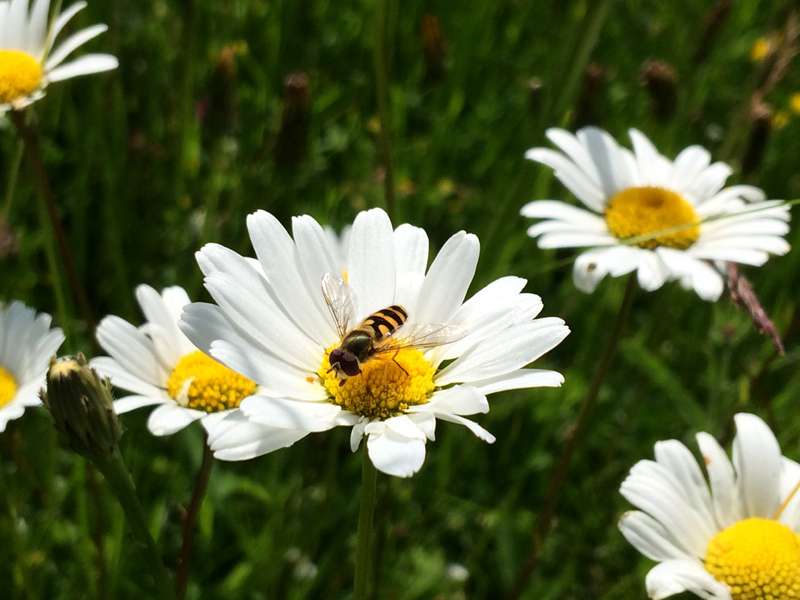
The Board has decided to unofficially try the program by allowing May growth on the westerly lawn between the ‘croquet’ lawn and Corndean Lane (the lane to Winchcombe). Not only should this experiment benefit local wildlife, but it will also bring an economic benefit to BP, itself, by reducing the cost of the grounds. The mowing of our lawns is one of the largest contributors to our maintenance fees and any saving in that direction is welcome. It is also good for residents, visitors and prospective buyers to see our participation in responsible, nationally recognized initiatives aimed at restoring the balance of Britain’s natural ecology.
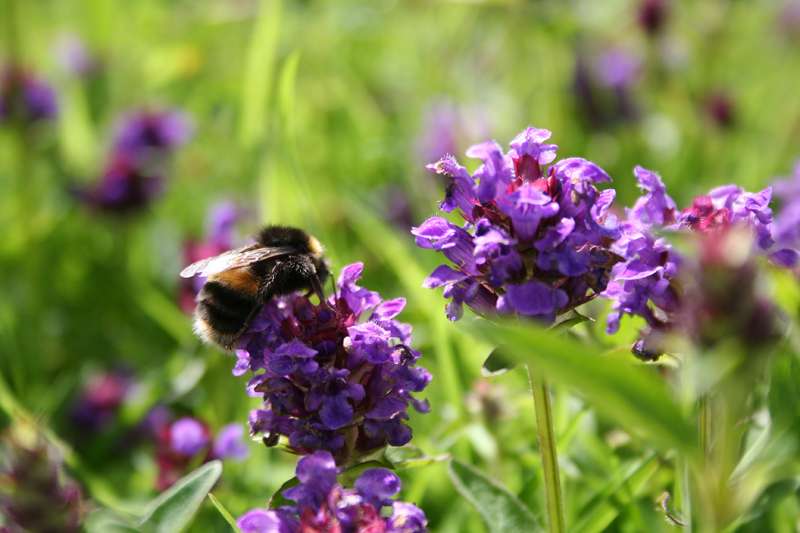
White-tailed bumblebee on selfheal.
Trevor Dines/Plantlife
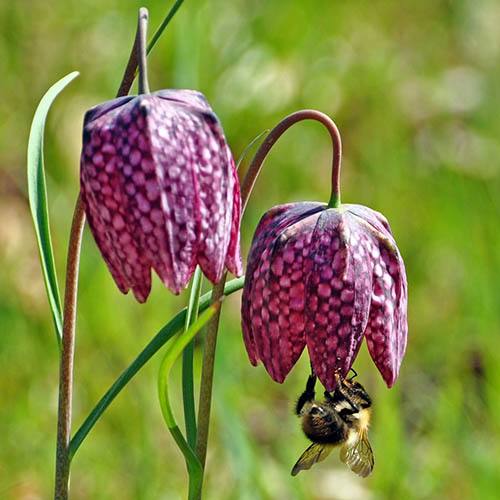
Snake’shead fritillary.
Interested residents are encouraged to participate by observing the area and photographing the plant species, especially close-ups of unusual ones. Please email your photos to David Cuin at dectra@q.com. The results of this tentative trial will be reported through this website.
________________________
